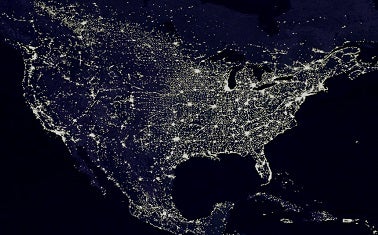The Clean Power Plan is designed with reliability in mind, a fact detractors tend to ignore. The specter of grid failure is a frightening image, one that critics of the new power plant pollution standards have fixated on, but it’s just that: a specter, an illusion not grounded in reality.
The fact is that regional and state-level regulators have repeatedly demonstrated they are up to the task of planning for future power needs without any threat to grid reliability. And if, for some reason, it proves an especially daunting task this time, the final plan includes special provisions that further address grid reliability issues:
- moves deadline for emission reductions to 2022
- allows multi-state compliance approaches
- requires states to show they considered grid reliability
- allows states to apply for extensions if grid concerns arise
Some states already ahead of the game
Of course, some states are already on track to meet their goals under the Clean Power Plan, as a recent article in theWashington Post noted. The plan’s purpose-built flexibility in meeting those targets is one reason why.
“One state may opt to phase out older coal-burning power plants, while another might seek to expand the use of solar and wind energy. Or a state might add new energy efficiency programs to cut electricity consumption,” the newspaper reports.
There are many roads to the clean energy future, and each state can and will choose the path that best and most reliably meets its needs.
Bold action in California, impressive results
Environmental progress is too often framed as coming at the expense of something else, such as reliability or economic growth. But these are invariably false dichotomies.
My colleague Diane Regas reminded me that whenCalifornia’s Global Warming Solutions Act was signed into law in 2006, the naysayers who preferred the broken status quo claimed it would hurt the state’s economy. Quite the contrary, Diane noted. California’s economy is, in fact, on a growth spurt.
In 2014, the state added 471,200 jobs, and its economy is growing faster than the United States economy as a whole – even as greenhouse gas emissions are declining. Clean-tech jobs in California have grown 10 times faster than jobs in other sectors over the past decade.
And, since 2006, the state has seen clean energy venture capital investments worth $27 billion, more than the other 49 states combined.
Consider acid rain in the 1980s
Going further back, the plight of acid rain in the 1980s offers some interesting parallels.
The National Academy of Sciences concluded that sulfur dioxide emissions, mostly from coal-fired power plants, were turning rain and snow acidic, to the detriment of aquatic life and forests.
The solution Environmental Defense Fund proposed, a cap-and-trade program for sulfur dioxide emissions, was met with strong resistance. The power sector participated, however, and not only did the lights stay on, but the emissions were cut in half at a fraction of the expected cost.
That’s one of the reasons The Economist called it “the greatest green success story of the past decade.” The Clean Power Plan, facing similar misinformed resistance, could be this decade’s crowning environmental achievement.
An American solution aligned with global trends
The Clean Power Plan is an American solution in line with a growing global commitment to policies that support and advance clean energy generation and distribution. Reliability is an essential consideration in programs around the world, and here in the U.S. it’s no different.
As we head toward Paris and COP-21, a strong national program such as the Clean Power Plan will demonstrate to the international community that we’re fully committed to a clean energy future.
The past and present show us that we can reduce harmful carbon pollution while keeping our power system strong. The future is up to us, and a future with the Clean Power Plan is far brighter.
The lights will stay on – they’ll just be powered in more responsible, sustainable ways.
Photo source: NASA/GSFC
This post originally appeared on our EDF Voices blog.










